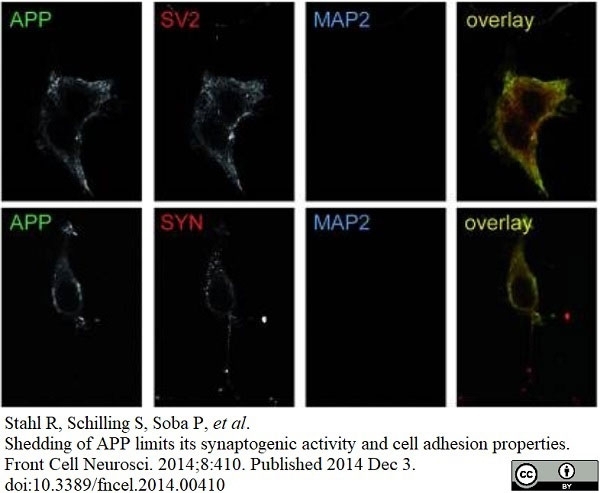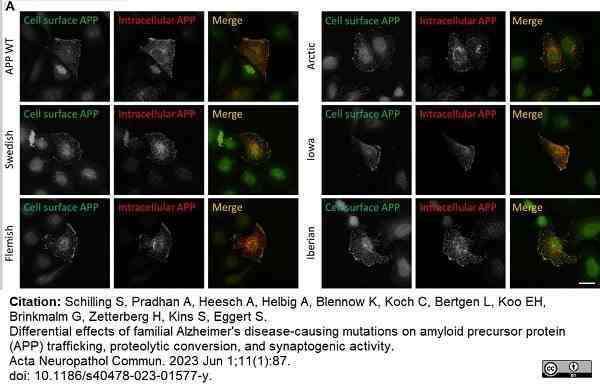c-Myc antibody | JAC6







Rat anti c-Myc
- Product Type
- Monoclonal Antibody
- Clone
- JAC6
- Isotype
- IgG1
- Specificity
- c-Myc
| Rat anti Human c-myc antibody, clone JAC6 recognises the myc proto-oncogene which is frequently used to tag proteins, and is the same epitope recognized by clone 9E10. c-myc is also known as Transcription factor p64 or Class E basic helix-loop-helix protein 39. |
- Target Species
- Human
- Product Form
- Purified IgG - liquid
- Preparation
- Purified IgG prepared by affinity chromatography on Protein G from tissue culture supernatant
- Buffer Solution
- Phosphate buffered saline
- Preservative Stabilisers
- 0.09% sodium azide (NaN3)
- Carrier Free
- Yes
- Immunogen
- Amino acids 408-439 corresponding to the C-terminal region of human c-myc.
- Approx. Protein Concentrations
- IgG concentration 1.0mg/ml
- Regulatory
- For research purposes only
- Guarantee
- 12 months from date of despatch
Avoid repeated freezing and thawing as this may denature the antibody. Storage in frost-free freezers is not recommended.
| Application Name | Verified | Min Dilution | Max Dilution |
|---|---|---|---|
| Immunofluorescence | |||
| Immunohistology - Frozen | |||
| Immunoprecipitation | |||
| Western Blotting | 1/500 | 1/1000 |
References for c-Myc antibody
-
Smith, G.D. et al. (2002) TRPV3 is a temperature-sensitive vanilloid receptor-like protein.
Nature. 418 (6894): 186-90. -
Shin, Y. et al. (2005) The co-chaperone carboxyl terminus of Hsp70-interacting protein (CHIP) mediates alpha-synuclein degradation decisions between proteasomal and lysosomal pathways.
J Biol Chem. 280 (25): 23727-34. -
Lozano, E. et al. (2008) PAK is required for the disruption of E-cadherin adhesion by the small GTPase Rac.
J Cell Sci. 121 (Pt 7): 933-8. -
Tetzlaff, J.E. et al. (2008) CHIP targets toxic alpha-Synuclein oligomers for degradation.
J Biol Chem. 283 (26): 17962-8. -
Dawson, K. et al. (2008) Loss of regulators of vacuolar ATPase function and ceramide synthesis results in multidrug sensitivity in Schizosaccharomyces pombe.
Eukaryot Cell. 7 (6): 926-37. -
Jenkins, P.M. et al. (2009) PACS-1 mediates phosphorylation-dependent ciliary trafficking of the cyclic-nucleotide-gated channel in olfactory sensory neurons.
J Neurosci. 29 (34): 10541-51. -
Liebig, T. et al. (2009) RhoE Is required for keratinocyte differentiation and stratification.
Mol Biol Cell. 20 (1): 452-63. -
Stahl, R. et al. (2014) Shedding of APP limits its synaptogenic activity and cell adhesion properties.
Front Cell Neurosci. 8: 410.
View The Latest Product References
-
Smith, M.D. et al. (2018) CCPG1 Is a Non-canonical Autophagy Cargo Receptor Essential for ER-Phagy and Pancreatic ER Proteostasis.
Dev Cell. 44 (2): 217-232.e11. -
Tsuboguchi, S. et al. (2023) TDP-43 differentially propagates to induce antero- and retrograde degeneration in the corticospinal circuits in mouse focal ALS models.
Acta Neuropathol. 146 (4): 611-629. -
Schilling, S. et al. (2023) Differential effects of familial Alzheimer's disease-causing mutations on amyloid precursor protein (APP) trafficking, proteolytic conversion, and synaptogenic activity.
Acta Neuropathol Commun. 11 (1): 87.
- RRID
- AB_322203
- UniProt
- P01106
- Entrez Gene
- MYC
- GO Terms
- GO:0005515 protein binding
- GO:0001658 branching involved in ureteric bud morphogenesis
- GO:0003700 sequence-specific DNA binding transcription factor activity
- GO:0005654 nucleoplasm
- GO:0005730 nucleolus
- GO:0006357 regulation of transcription from RNA polymerase II promoter
- GO:0006879 cellular iron ion homeostasis
- GO:0007050 cell cycle arrest
- GO:0008283 cell proliferation
- View More GO Terms
- GO:0042493 response to drug
- GO:0016563 transcription activator activity
- GO:0032204 regulation of telomere maintenance
- GO:0070888 E-box binding
- GO:0090096 positive regulation of metanephric cap mesenchymal cell proliferation
MCA1929
If you cannot find the batch/lot you are looking for please contact our technical support team for assistance.
Please Note: All Products are "FOR RESEARCH PURPOSES ONLY"
View all Anti-Human ProductsAlways be the first to know.
When we launch new products and resources to help you achieve more in the lab.
Yes, sign me up





